Metz, often called La Ville d’Or — the Golden City — is a place where centuries of French and German heritage meet under a warm, honey-colored glow. Set on the banks of the Moselle River in northeastern France, Metz is known for its luminous Jaumont stone architecture, its Gothic cathedral with world-famous stained glass, its elegant Imperial Quarter, and its bold embrace of modern art at the Centre Pompidou-Metz.
This is not just another charming European town. Metz blends Roman roots, Germanic precision, French sophistication, and contemporary creativity, creating a destination unlike any other in the Lorraine region. From savoring a slice of authentic quiche Lorraine in a bustling covered market to strolling through riverside gardens or listening to live jazz beneath medieval arches, Metz is at once historic and alive, refined yet vibrant.
Saint-Stephen’s Cathedral

Overview and Significance
Saint-Stephen’s Cathedral (Cathédrale Saint-Étienne de Metz, Place d’Armes, 57000 Metz) is the crown jewel of Metz and one of the most remarkable Gothic structures in Europe. Known as La Lanterne du Bon Dieu (“The Lantern of the Good Lord”), it is famed for its vast stained-glass windows that pour ethereal light into its soaring nave. Built between the 13th and 16th centuries, the cathedral symbolizes Metz’s role as a wealthy episcopal city and cultural crossroads between France and Germany. Its golden limestone façade, drawn from local Jaumont quarries, reflects the sunlight in warm hues that give Metz its title, “The Golden City.”
Architecture and Design Features
The cathedral’s dimensions are awe-inspiring: the nave reaches a height of 41 meters, making it one of the tallest in France. The building showcases an evolution of Gothic styles — early Gothic pointed arches in the choir and nave, flamboyant tracery in later chapels, and massive flying buttresses supporting the upper levels. The Jaumont stone, which glows yellow-gold, adds an unmistakable brightness. Visitors will notice its western façade, completed in the 16th century, adorned with sculpted portals depicting biblical scenes and local saints.
Stained Glass Through the Centuries
Saint-Stephen’s Cathedral is home to over 6,500 square meters of stained glass spanning eight centuries. Medieval artists such as Hermann von Münster crafted rose windows and lancets, while Renaissance glassmakers brought delicate colors and geometric patterns. In the 20th century, modern masters like Marc Chagall, Jacques Villon, and Roger Bissière contributed bold contemporary designs. Chagall’s windows in the north transept — glowing with deep blues and ruby reds — depict Old Testament figures and evoke Metz’s commitment to both tradition and innovation.
Visiting the Cathedral
- Address: Place d’Armes, 57000 Metz
- Opening Hours: Generally open daily, 8:00 a.m. – 7:00 p.m. (closed only during special services or maintenance)
- Entry Fee: Free; donations welcome.
- Guided Tours: Offered by Metz Tourist Office at 2 Place d’Armes, 57000 Metz. Tours last about 1 hour and provide in-depth insights into the art and architecture.
- Tip: Visit in the early morning or late afternoon to see how the golden light transforms the stained glass.
Guided Tours and Historical Insights
The cathedral is best appreciated with a knowledgeable guide. Tours explain how Metz became an episcopal stronghold in the Middle Ages, rivaling other European religious centers. You’ll learn about the bishops who once held near-princely power and the influence of Roman and Germanic traditions on the cathedral’s construction. Special tours often include hidden areas such as the crypt and treasury, where liturgical artifacts are displayed.
Place d’Armes and Surrounding Squares
The cathedral sits on Place d’Armes, 57000 Metz, an 18th-century square designed by royal architect Jacques-François Blondel. The square also houses Hôtel de Ville (City Hall), constructed with the same golden stone, and the Marché Couvert (Covered Market) at Place d’Armes, 57000 Metz, a vibrant spot to sample regional products. Just a short walk away, Place Saint-Louis, 57000 Metz, with its arcaded medieval houses, reveals the city’s merchant past and its historical role as a trading hub between France and the Holy Roman Empire.
Nearby Museums and Cultural Stops
A few minutes’ walk from the cathedral is Musée de la Cour d’Or at 2 Rue du Haut Poirier, 57000 Metz. This museum houses Gallo-Roman mosaics, medieval sculptures, and Renaissance paintings, giving context to Metz’s rich history. Visitors can explore Roman baths beneath the museum — a rare feature illustrating Metz’s ancient roots as Divodurum Mediomatricorum.
Cafés, Pastry Shops, and Local Flavors
The cathedral area is perfect for sampling Lorraine’s culinary delights:
- Maison Fresson (17 Rue du Grand Cerf, 57000 Metz) — Renowned for mirabelle plum desserts, pralines, and fine chocolates.
- Café de la Cathédrale (2 Place d’Armes, 57000 Metz) — Ideal for coffee or a quick lunch with a cathedral view.
- Pâtisserie Claude Bourguignon (16 Rue de la Fontaine, 57000 Metz) — Known for classic quiche Lorraine and traditional pâté en croûte.
Shopping Streets Around the Cathedral
A short walk down Rue Taison, 57000 Metz, you’ll find artisan boutiques offering handmade ceramics, jewelry, and regional crafts. For fashion and lifestyle brands, Rue Serpenoise, 57000 Metz, serves as the city’s main shopping boulevard, where luxury labels stand alongside French high-street shops. Combining cathedral sightseeing with shopping makes this area a favorite for day visitors.
Seasonal Events and Night Illumination
The cathedral and its square are the heart of Metz’s cultural life. During Constellations de Metz, a summer digital arts festival, the cathedral façade becomes a canvas for light projections. In December, the Metz Christmas Market surrounds the cathedral with wooden chalets selling gifts, mulled wine, and mirabelle plum treats. After dusk, elegant lighting transforms the cathedral into a glowing beacon, ideal for evening photography and riverside walks along the nearby Moselle.
Centre Pompidou-Metz
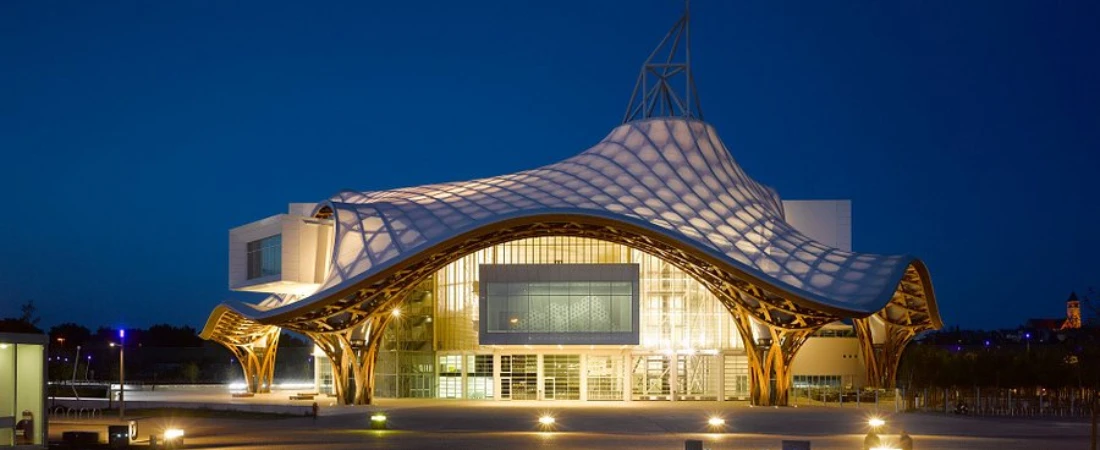
Overview and Significance
The Centre Pompidou-Metz (1 Parvis des Droits de l’Homme, 57020 Metz) is one of Europe’s leading venues for modern and contemporary art. Opened in 2010 as a sister institution to Paris’s Centre Pompidou, it brings major exhibitions, avant-garde installations, and cross-disciplinary performances to northeastern France. Its mission is to make world-class art accessible to regional audiences while showcasing Metz as a forward-looking city.
Architectural Design by Shigeru Ban
Designed by Japanese architect Shigeru Ban with French architect Jean de Gastines, the museum features an iconic roof inspired by a Chinese bamboo hat. This undulating, translucent canopy spans 90 meters and appears to float above the glass and timber structure. The design integrates Japanese minimalism with modern European aesthetics, offering panoramic views of Metz from its upper galleries.
Visiting the Museum
- Address: 1 Parvis des Droits de l’Homme, 57020 Metz
- Opening Hours: Typically open daily except Tuesdays, 10:00 a.m. – 6:00 p.m. (later on Thursdays).
- Entry Fee: Variable depending on the exhibition (usually €7–€12).
- Facilities: Coat check, café, bookshop, and wheelchair accessibility.
- Tip: Pre-book tickets during major exhibitions to avoid queues.
Major Exhibitions and Collections
Unlike Paris, Metz does not house a permanent collection — instead, it curates temporary shows from the Centre Pompidou’s vast holdings of 20th- and 21st-century masterpieces. Visitors have seen works by Picasso, Kandinsky, Matisse, Warhol, and contemporary artists such as Anish Kapoor and Yayoi Kusama. The museum also highlights photography, new media, and interactive art.
Guided Tours and Workshops
The museum offers guided tours in French, English, and German, as well as themed visits for families. Creative workshops allow visitors to experiment with artistic techniques inspired by current exhibitions. For groups, customized tours provide an in-depth look at curatorial themes and architectural design.
The Museum Roof Terrace and Views
One of the best-kept secrets of Centre Pompidou-Metz is its rooftop terrace, which offers panoramic views of the city skyline, including Saint-Stephen’s Cathedral and the Imperial Quarter. The terrace is accessible from the upper levels of the museum and is especially stunning at sunset.
Nearby Dining and Refreshments
Within the museum, La Terrasse Café (1 Parvis des Droits de l’Homme, 57020 Metz) serves light meals, pastries, and coffee with a modern ambiance. Just outside, Les Voutes (2 Rue des Jardins, 57000 Metz) offers traditional French fare in a vaulted stone setting. Another popular stop is Le Magasin aux Vivres (5 Avenue Ney, 57000 Metz), a fine-dining restaurant within walking distance, known for regional cuisine with a modern twist.
Access and Transportation
The museum is located near Metz-Ville railway station (Place du Général de Gaulle, 57000 Metz), about a 10-minute walk. Visitors can also take local buses or park in nearby lots such as Parking Pompidou (Rue aux Arènes, 57000 Metz). Its central location makes it easy to combine with visits to the Imperial Quarter or the riverside parks.
Bookshop and Cultural Souvenirs
The Centre Pompidou-Metz Bookshop (1 Parvis des Droits de l’Homme, 57020 Metz) offers exhibition catalogs, art books, design objects, and limited-edition souvenirs. It’s an excellent place to pick up gifts, including contemporary prints or items inspired by featured artists.
Special Events and Evening Programs
In addition to daytime exhibitions, the museum organizes evening programs, film screenings, and performances in partnership with international festivals. During summer, its courtyard hosts open-air events as part of Constellations de Metz. Check the museum’s schedule for night openings, which let you explore galleries under atmospheric lighting.
Imperial Quarter and Belle Époque Metz

Overview and Historical Significance
The Imperial Quarter (Quartier Impérial, 57000 Metz) is one of Metz’s most distinctive neighborhoods, built during the German annexation (1871–1918) to demonstrate the power and modernity of the German Empire. This area reflects German urban planning, with broad boulevards, landscaped squares, and monumental buildings blending Renaissance, Romanesque Revival, and Art Nouveau styles. Today it is a protected heritage zone that showcases Metz’s unique Franco-German identity.
Metz-Ville Railway Station – A Monument of Power
At the heart of the Imperial Quarter is Gare de Metz-Ville (Place du Général de Gaulle, 57000 Metz), completed in 1908. The station’s massive stone façade, clock tower, and sculpted reliefs reflect Kaiser Wilhelm II’s vision of Metz as a “German showcase city.” Inside, visitors will find stained glass windows, vaulted ceilings, and ornate waiting rooms — more like a palace than a railway hub. The station has repeatedly been voted one of the most beautiful in France.
Avenue Foch – Urban Elegance
Avenue Foch (57000 Metz) forms the backbone of the Imperial Quarter. This grand boulevard is lined with villas, townhouses, and apartment buildings, each displaying eclectic German architecture — from neo-Renaissance to neo-Baroque. Many structures feature detailed façades, wrought-iron balconies, and ornamental sculptures. Walking here feels like stepping into a living architectural museum.
Temple Neuf – A Riverside Landmark
On the nearby island of Île du Petit-Saulcy, Place de la Comédie, 57000 Metz, stands the Temple Neuf, a Protestant church built in 1904 in Romanesque Revival style. Surrounded by gardens and the Moselle River, its towers and gray sandstone exterior create a striking contrast to Metz’s golden limestone buildings. At night, the temple is beautifully illuminated, reflecting in the river waters.
Seille Park and Green Spaces
The Imperial Quarter is known not only for architecture but also for its green planning. Square du Luxembourg (Avenue Foch, 57000 Metz) and Esplanade (Avenue Ney, 57000 Metz) offer landscaped lawns, flower beds, and statues, creating peaceful walking routes. The Esplanade overlooks the Moselle valley and is a favorite local spot for picnics and evening strolls.
Post Office and Civic Buildings
The Main Post Office (2 Rue du Général Ferrié, 57000 Metz) is another imposing imperial structure. Built in neo-Romanesque style with heavy masonry and decorative carvings, it demonstrates German civic pride during the annexation. These administrative buildings were designed to project strength and efficiency, reflecting Metz’s strategic role in the German Empire.
Art Nouveau Gems
Amid the imperial grandeur, Metz developed a softer side during the Belle Époque. Look for Art Nouveau villas along Rue aux Arènes and Rue Gambetta (57000 Metz), featuring flowing floral motifs, colored glass, and ornate wrought iron. These buildings reveal Metz’s cultural openness and its ties to European decorative arts movements.
Shopping and Cafés in the Quarter
The area around Place du Général de Gaulle, 57000 Metz is filled with upscale shops, delicatessens, and patisseries. Try Aux Merveilleux de Fred (3 Rue de la Tête d’Or, 57000 Metz) for airy meringue cakes or Les Cafés Fauve (1 Rue Lafayette, 57000 Metz) for artisan coffee. The Quarter is quieter than the old town, making it a pleasant area to shop and dine without crowds.
Walking Tours and Audio Guides
The Metz Tourist Office at 2 Place d’Armes, 57000 Metz offers guided walking tours of the Imperial Quarter, explaining the symbolism behind each building. Self-guided visitors can use audio guides or mobile apps to learn about key sites such as Palais du Gouverneur (Boulevard Poincaré, 57000 Metz) and Chambre de Commerce et d’Industrie (5 Rue de la Tête d’Or, 57000 Metz).
Seasonal Events and Night Lighting
Like the historic center, the Imperial Quarter hosts cultural events year-round. During Constellations de Metz, projections light up facades along Avenue Foch, while summer concerts sometimes take place in its squares. Evening walks reveal how carefully Metz illuminates this district, highlighting its architectural lines and making night photography especially rewarding.
Gastronomy of Metz – Where and What to Eat
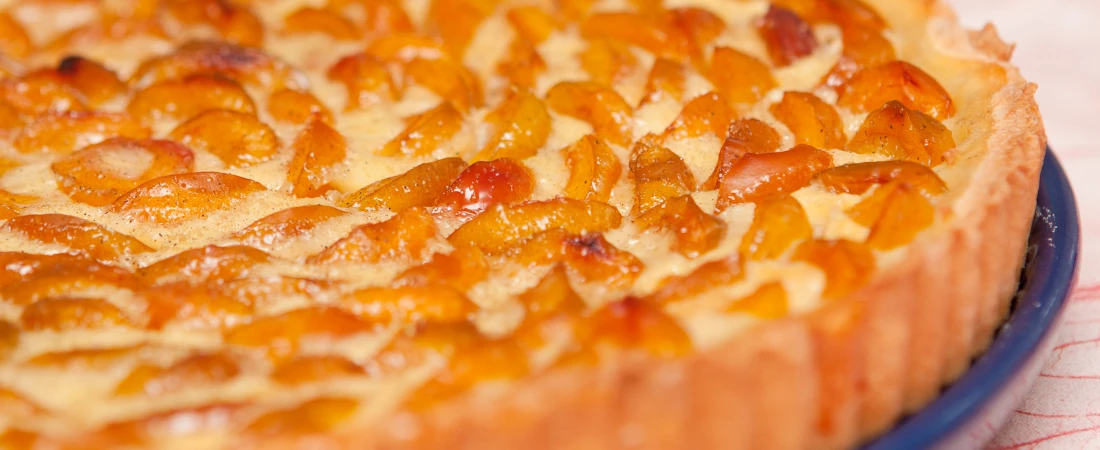
Overview of Lorraine Cuisine
Metz, situated in the Lorraine region, is renowned for its hearty yet refined cuisine, blending French flavors with Germanic influences. Local specialties include quiche Lorraine, mirabelle plum desserts, Lorraine pâté, and artisan charcuterie. Food culture here combines street markets, traditional bistros, and fine dining, offering an authentic taste of Metz for every visitor.
Quiche Lorraine – The Iconic Dish
No visit to Metz is complete without tasting Quiche Lorraine, a savory tart filled with eggs, cream, and smoked bacon. Recommended spots:
- Pâtisserie Claude Bourguignon, 16 Rue de la Fontaine, 57000 Metz – Known for authentic recipes.
- Le Magasin aux Vivres, 5 Avenue Ney, 57000 Metz – Offers a modern take with seasonal ingredients.
Mirabelle Plum Desserts
Mirabelle plums are a Lorraine specialty, celebrated from late summer through autumn. Try tarts, jams, and liqueurs at:
- Maison Fresson, 17 Rue du Grand Cerf, 57000 Metz – Famous for mirabelle tarts and chocolate combinations.
- Pâtisserie Gilles, 8 Rue Serpenoise, 57000 Metz – Offers mirabelle pastries in elegant packaging.
Lorraine Pâté and Charcuterie
Rich, savory, and flavorful, Lorraine pâté is a must-try:
- Charcuterie Schaeffer, 12 Rue Taison, 57000 Metz – Traditional recipes with high-quality meats.
- Boucherie Metz Gourmet, 22 Rue Lafayette, 57000 Metz – Specialty pâtés and terrines.
Covered Market (Marché Couvert)
Located at Place d’Armes, 57000 Metz, the market is a hub of local produce, cheese, bread, and wine. Open daily except Mondays, it’s ideal for tasting seasonal ingredients and picking up fresh treats. The market’s cafes serve light meals with products sourced directly from Lorraine farms.
Fine Dining in Metz
For those seeking gourmet experiences:
- Restaurant Les Tables du Metz, 3 Rue Mazelle, 57000 Metz – Michelin-recommended, blending modern French techniques with regional ingredients.
- Le Magasin aux Vivres, 5 Avenue Ney, 57000 Metz – Offers tasting menus featuring quiche, fish, and seasonal dishes.
Cafés and Light Meals
- Café de la Cathédrale, 2 Place d’Armes, 57000 Metz – Coffee, pastries, and light lunches with cathedral views.
- Les Voutes, 2 Rue des Jardins, 57000 Metz – Cozy bistro serving soups, sandwiches, and regional desserts.
Wine and Spirits
Metz lies near Moselle vineyards, producing whites, rosés, and sparkling wines. Wine shops in the city include:
- Cave à Vin Metz, 14 Rue Taison, 57000 Metz – Local wines and tasting sessions.
- Maison des Vins de Lorraine, 18 Rue de la Fontaine, 57000 Metz – Offers educational tastings and regional specialties.
Seasonal Food Events
Metz celebrates its culinary heritage with events like:
- Mirabelle Festival (August, Place Saint-Louis, 57000 Metz) – Featuring desserts, jams, and liqueurs.
- Lorraine Gastronomy Week (March, city-wide) – Restaurants offer set menus showcasing regional ingredients.
Tips for Food Lovers
- Try local cheese varieties such as Munster and Bergkäse.
- Sample street snacks like pretzels or Lorraine pastries along Rue Taison.
- Book restaurants in advance for popular weekends or during festivals.
- Explore small bakeries in the Imperial Quarter for authentic treats.
Moselle River Walks and Parks
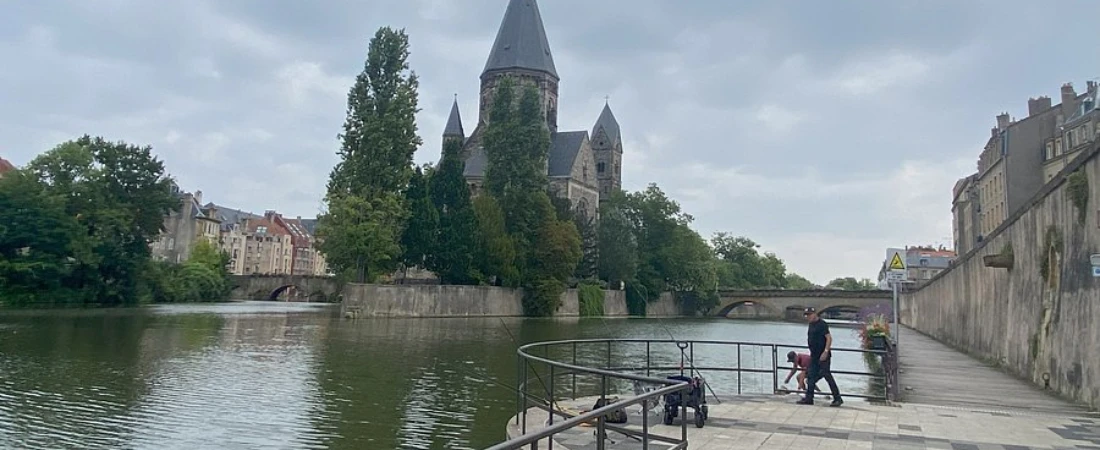
Overview of Metz’s Green Spaces
Metz is a city where nature blends seamlessly with urban life. The Moselle River, winding through the city, offers scenic promenades, cycling paths, and riverside gardens. In addition to the riverbanks, Metz has parks, squares, and botanical gardens where locals and visitors relax, picnic, or enjoy seasonal events. These outdoor spaces complement the city’s historic and modern attractions, providing moments of calm and natural beauty.
Moselle River Promenade
The Moselle River Walk (Quai des Régates, 57000 Metz) is perfect for leisurely strolls. The promenade stretches from Pont des Morts to Pont Saint-Georges, featuring benches, fountains, and views of the cathedral and Imperial Quarter. Early morning or sunset visits offer spectacular reflections of Metz’s golden stone architecture in the water.
Île du Petit-Saulcy
This small island in the Moselle is home to Temple Neuf (Place de la Comédie, 57000 Metz). Lush gardens and walking paths surround the church, and the area is ideal for photography. Seasonal flower displays in spring and summer make it especially picturesque.
Plan d’Eau (Artificial Lake)
Plan d’Eau, Avenue Robert Schuman, 57000 Metz, is a man-made lake offering walking and cycling paths, as well as small cafés along the shore. Families often rent paddleboats, while joggers and cyclists enjoy the scenic loop around the lake.
Jardin Botanique de Metz
The Botanical Garden (Rue du Pontiffroy, 57000 Metz) spans several hectares and contains thematic gardens, including rose gardens, exotic plant collections, and shaded groves. The garden also hosts guided tours and educational programs for children.
Esplanade and Promenade du Sablon
The Esplanade (Avenue Ney, 57000 Metz) is a formal green space with tree-lined avenues and statues. It connects to Promenade du Sablon, where paths run alongside historic villas and sculptures. This route is ideal for architecture enthusiasts who enjoy blending sightseeing with a leisurely walk.
Parc de la Seille
Parc de la Seille (57000 Metz) is a large urban park with sports facilities, playgrounds, and picnic areas. The park also has dedicated cycling and jogging paths, making it a favorite among locals for daily exercise and weekend outings.
River Cruises and Water Activities
Several operators offer Moselle River cruises, departing from Quai des Régates, 57000 Metz. These guided boat tours provide history, architecture highlights, and scenic views of Metz from the water. Paddleboat and kayak rentals are available during the summer season.
Seasonal Events in Outdoor Spaces
- Summer Open-Air Concerts (Quai des Régates, 57000 Metz) – Local and international musicians perform along the riverbanks.
- Christmas Markets (Place de la République, 57000 Metz) – Some market stalls extend into riverside paths for holiday shopping and entertainment.
- Flower Festivals (Jardin Botanique, Rue du Pontiffroy, 57000 Metz) – Spring showcases seasonal blooms, particularly tulips and mirabelle trees.
Tips for Outdoor Exploration
- Wear comfortable shoes; cobblestones and gravel paths are common along river walks.
- Early morning or evening is best for photography, avoiding midday crowds.
- Bring a picnic to enjoy along Île du Petit-Saulcy or Parc de la Seille.
- Renting a bike or using Metz’s Mettis rapid transit bike program allows efficient exploration of multiple parks in one visit.
FRAC Lorraine and Opera-Theatre
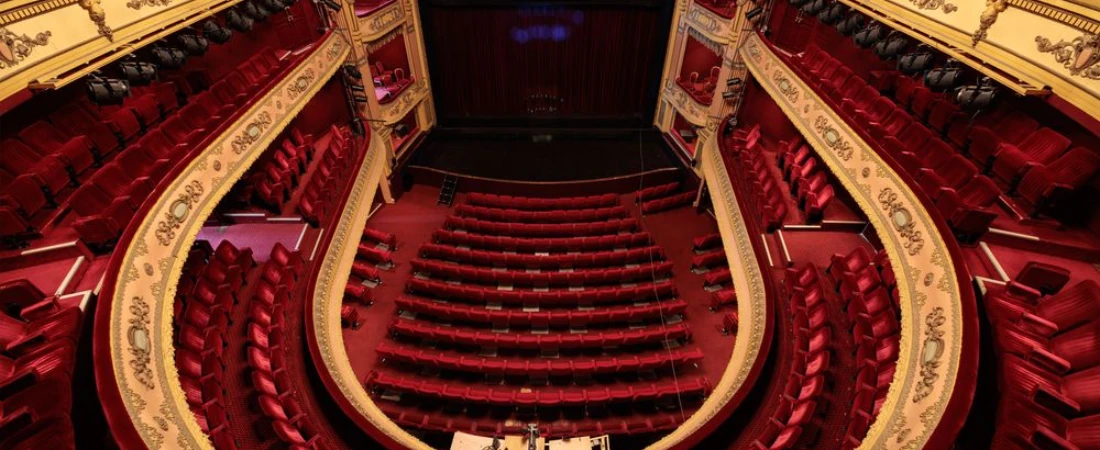
Overview of Metz’s Cultural Scene
Metz has a rich cultural life, blending historic traditions with contemporary arts. The city hosts theaters, concert halls, galleries, and museums that reflect its French and German heritage. Among the key cultural institutions are FRAC Lorraine (Fonds Régional d’Art Contemporain) and the Opéra-Théâtre de Metz Métropole, both central to the city’s artistic identity.
FRAC Lorraine – Contemporary Art Center
FRAC Lorraine (2 Place Saint-Jacques, 57000 Metz) is dedicated to contemporary art exhibitions and education. Established in 1982, it promotes modern artists from France and internationally. Its collections include paintings, sculptures, installations, and digital media, often featuring experimental works that challenge traditional boundaries.
Visiting FRAC Lorraine
- Address: 2 Place Saint-Jacques, 57000 Metz
- Opening Hours: Tuesday–Sunday, 11:00 a.m. – 6:00 p.m.
- Entry Fee: Free for permanent collections; temporary exhibitions may have a small charge.
- Tip: Check for artist talks, workshops, and special events during your visit.
Opera-Théâtre de Metz Métropole – A Historic Venue
The Opéra-Théâtre (1 Place de la Comédie, 57000 Metz) is France’s oldest working opera house, inaugurated in 1752. Its neoclassical architecture, grand auditorium, and lavish décor make it a cultural landmark. It hosts opera, ballet, symphonic concerts, and theater performances throughout the year.
Architectural Highlights of the Opera
Visitors are struck by the elegant façade, Corinthian columns, and sculptural pediments. Inside, the auditorium features gilded boxes, red velvet seating, and a painted ceiling depicting muses and allegorical figures. The acoustics are excellent, making live performances unforgettable.
Guided Tours and Performances
The opera offers guided tours (1 Place de la Comédie, 57000 Metz), where visitors learn about its history, design, and famous performances. Evening shows provide an immersive experience, from classical operas to contemporary productions. Booking in advance is recommended, especially for popular performances.
Nearby Cultural Institutions
Within walking distance are additional cultural spots:
- Centre Pompidou-Metz (1 Parvis des Droits de l’Homme, 57020 Metz) – Modern and contemporary art exhibitions.
- Musée de la Cour d’Or (2 Rue du Haut Poirier, 57000 Metz) – Roman, medieval, and Renaissance art.
- La BAM (Boîte à Musiques, 57 Rue de Pontiffroy, 57000 Metz) – Concert hall for contemporary music.
Cafés and Dining Around Cultural Venues
- Café Saint-Jacques (3 Place Saint-Jacques, 57000 Metz) – Light meals and coffee near FRAC Lorraine.
- Brasserie de la Comédie (4 Place de la Comédie, 57000 Metz) – French bistro cuisine near the opera house.
- Le Magasin aux Vivres (5 Avenue Ney, 57000 Metz) – Fine dining within 15 minutes walking distance.
Cultural Festivals and Seasonal Events
Metz hosts year-round cultural events:
- Metz Summer Arts Festival (Place de la Comédie & FRAC Lorraine, 57000 Metz) – Open-air music, theater, and art installations.
- Constellations de Metz (city-wide) – Digital art projections, including FRAC exteriors.
- Opera Highlights – Special performances during Christmas, Easter, and summer opera weeks.
Tips for Art and Culture Lovers
- Combine visits to FRAC Lorraine and the Opera for a full-day cultural itinerary.
- Check event calendars in advance, especially for limited exhibitions.
- Wear comfortable shoes; many venues are within walking distance in the historic center.
- Take advantage of audio guides and printed materials to understand the history behind artworks and performances.
Shopping in Metz
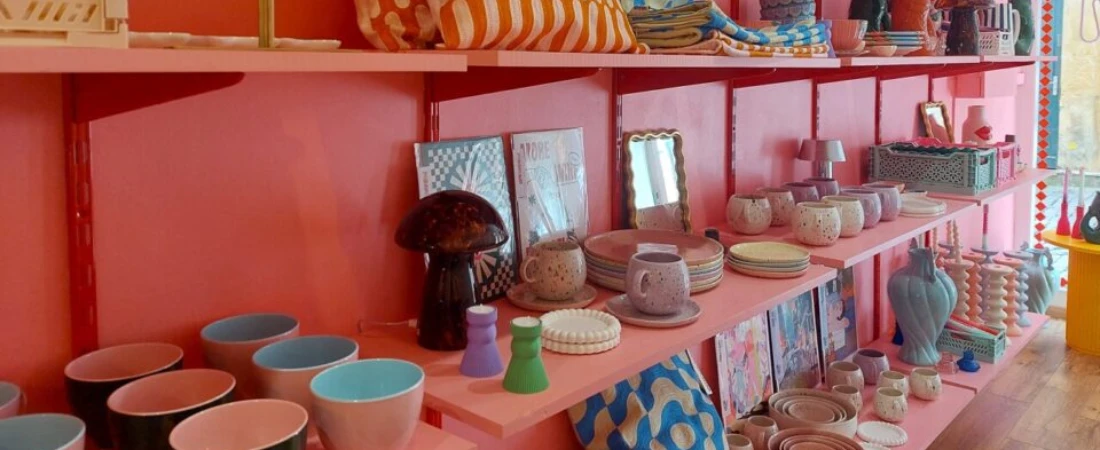
Overview of Shopping in Metz
Metz offers a diverse shopping experience that blends traditional markets, artisan boutiques, fashion stores, and specialty wine shops. Whether you are looking for gourmet ingredients, designer clothing, or unique souvenirs, Metz provides a shopping itinerary that combines history, culture, and modern trends.
Covered Market (Marché Couvert)
Marché Couvert (Place d’Armes, 57000 Metz) is the heart of local shopping. Open daily except Mondays, it features fresh produce, cheeses, meats, pastries, and regional specialties. It’s ideal for tasting mirabelle plum products, Lorraine pâté, and local cheeses. The market’s lively atmosphere captures the essence of Metz’s daily life.
Rue Taison – Artisan Boutiques
Rue Taison (57000 Metz) is lined with boutiques selling handcrafted jewelry, ceramics, and decorative items. Popular stops include:
- Atelier Fresson, 17 Rue du Grand Cerf, 57000 Metz – Artisan chocolates and mirabelle products.
- Galerie d’Art Contemporain, 10 Rue Taison, 57000 Metz – Local artists’ works and prints.
Rue Serpenoise – Fashion and Lifestyle
Rue Serpenoise (57000 Metz) is Metz’s main shopping street for clothing, accessories, and lifestyle stores. International brands and French high-street labels mix with local shops, creating a blend of modern and traditional shopping experiences.
Place Saint-Jacques – Boutique Shopping
Place Saint-Jacques (57000 Metz) hosts independent boutiques and design stores. You can find clothing, home décor, and art objects in a charming historic setting. The square’s cafes also provide a chance to rest and people-watch between shops.
Gourmet Food Shops
Metz offers specialty shops for Lorraine delicacies:
- Maison Fresson, 17 Rue du Grand Cerf, 57000 Metz – Mirabelle tarts and chocolates.
- Boucherie Metz Gourmet, 22 Rue Lafayette, 57000 Metz – Regional pâtés and terrines.
- Cave à Vin Metz, 14 Rue Taison, 57000 Metz – Local wines and tasting sessions.
Wine Shops and Tasting Rooms
The Moselle region produces fine wines, and Metz has dedicated shops:
- Maison des Vins de Lorraine, 18 Rue de la Fontaine, 57000 Metz – Wine tasting and educational events.
- Cave des Tonneliers, 5 Rue Lafayette, 57000 Metz – Selection of regional whites, rosés, and sparkling wines.
Sunday Flea Market
The Metz Sunday Flea Market (Place de la République, 57000 Metz) is perfect for antiques, vintage items, and collectibles. Stalls feature furniture, old books, postcards, and artisanal goods. It’s a great way to find unique souvenirs while experiencing local culture.
Shopping Tips and Seasonal Offers
- Visit Marché Couvert early in the morning for the freshest products.
- Explore Rue Taison and Rue Serpenoise for holiday sales in December and January.
- Attend seasonal fairs for artisanal items, especially during the Mirabelle Festival (August, Place Saint-Louis, 57000 Metz).
Combining Shopping with Sightseeing
Metz’s compact city center allows easy walking between shops and landmarks. After exploring Place d’Armes, Rue Serpenoise, and Place Saint-Jacques, visitors can continue to Saint-Stephen’s Cathedral or the Moselle River promenades, making shopping a seamless part of a cultural itinerary.
Final Thoughts
Metz, the Golden City, is a captivating blend of history, culture, and modernity. Its soaring Saint-Stephen Cathedral, contemporary Centre Pompidou-Metz, and Imperial Quarter’s architectural elegance showcase the city’s rich Franco-German heritage. Culinary delights such as quiche Lorraine, mirabelle plum desserts, and Lorraine pâté reflect the region’s gastronomic tradition, while vibrant markets, boutiques, and wine shops make shopping an unforgettable experience.
Nature lovers will enjoy Moselle River walks, lush parks, and botanical gardens, offering serene escapes within the urban landscape. Metz’s cultural scene, from FRAC Lorraine’s modern art to the historic Opéra-Théâtre, adds depth and vibrancy to any visit. In the evenings, elegant bars, open-air concerts, and seasonal events bring the city to life after dark, blending social experiences with aesthetic beauty.

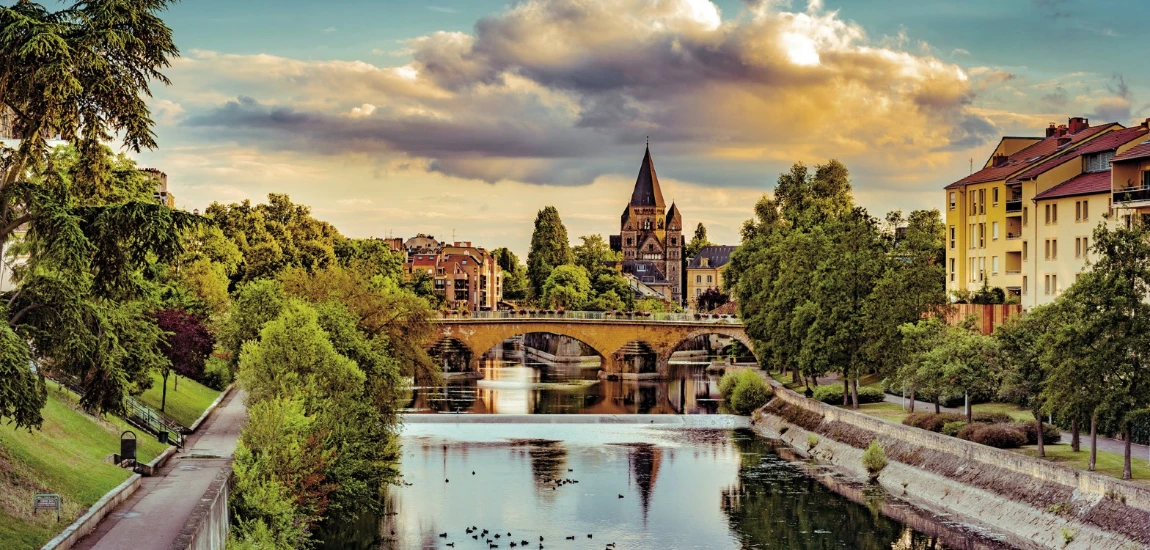

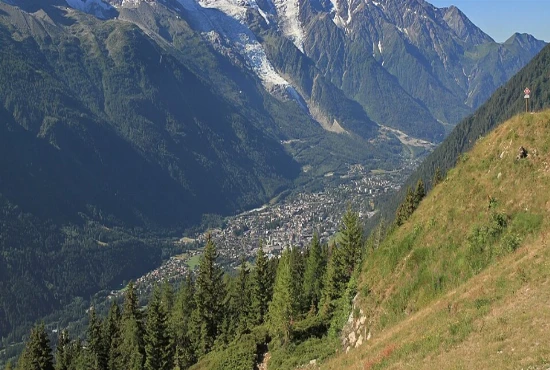
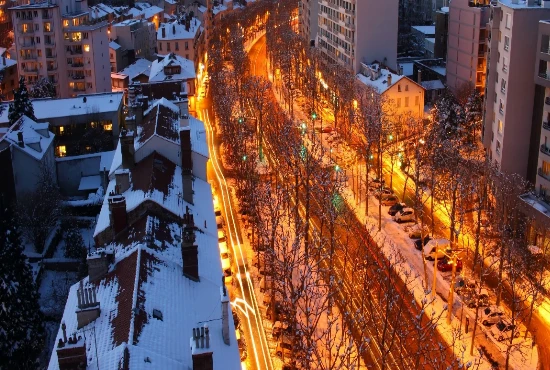

Leave a Reply